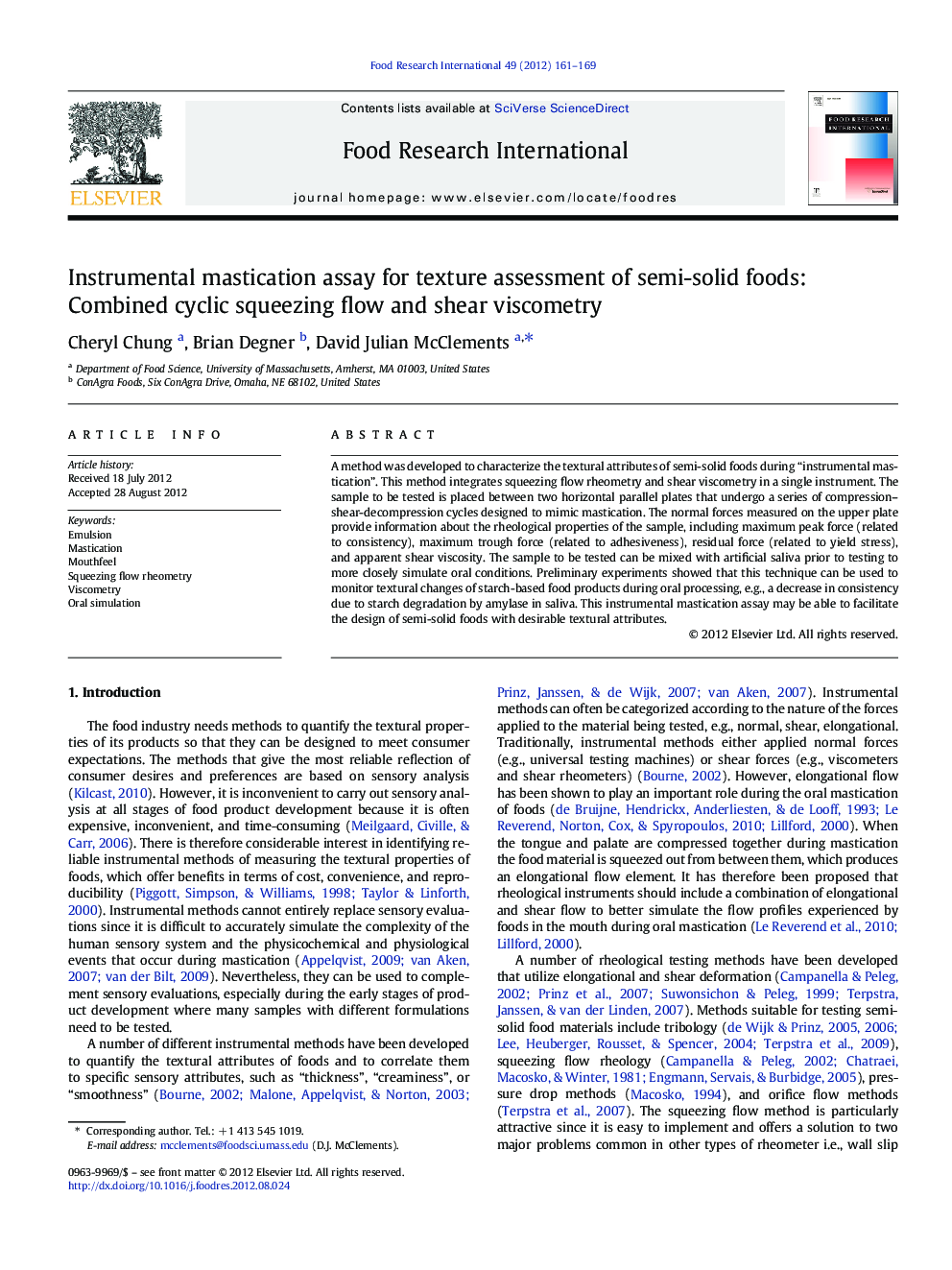| Article ID | Journal | Published Year | Pages | File Type |
|---|---|---|---|---|
| 6399047 | Food Research International | 2012 | 9 Pages |
A method was developed to characterize the textural attributes of semi-solid foods during “instrumental mastication”. This method integrates squeezing flow rheometry and shear viscometry in a single instrument. The sample to be tested is placed between two horizontal parallel plates that undergo a series of compression-shear-decompression cycles designed to mimic mastication. The normal forces measured on the upper plate provide information about the rheological properties of the sample, including maximum peak force (related to consistency), maximum trough force (related to adhesiveness), residual force (related to yield stress), and apparent shear viscosity. The sample to be tested can be mixed with artificial saliva prior to testing to more closely simulate oral conditions. Preliminary experiments showed that this technique can be used to monitor textural changes of starch-based food products during oral processing, e.g., a decrease in consistency due to starch degradation by amylase in saliva. This instrumental mastication assay may be able to facilitate the design of semi-solid foods with desirable textural attributes.
⺠A new instrument has been developed to simulate oral processing. ⺠The device simulates upward/downward and backward/forward motions of the tongue. ⺠The device was used to monitor starch degradation in simulated oral conditions.
